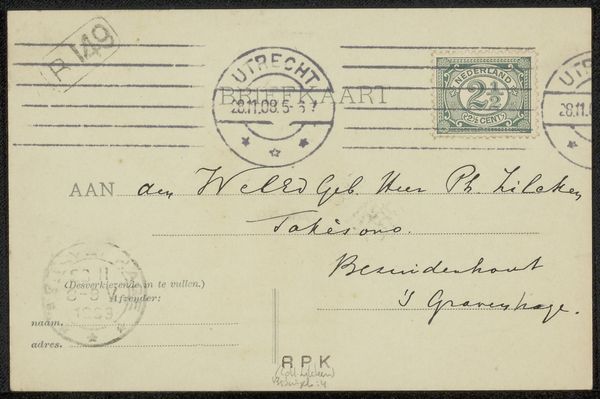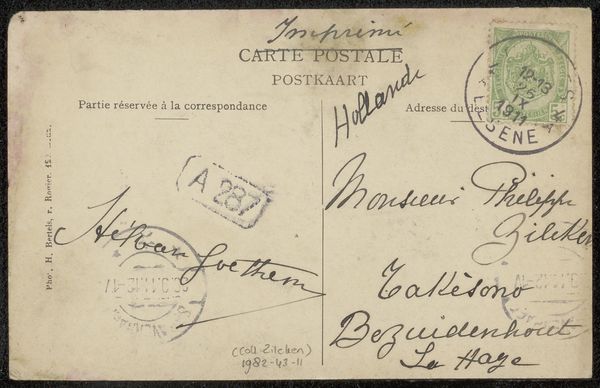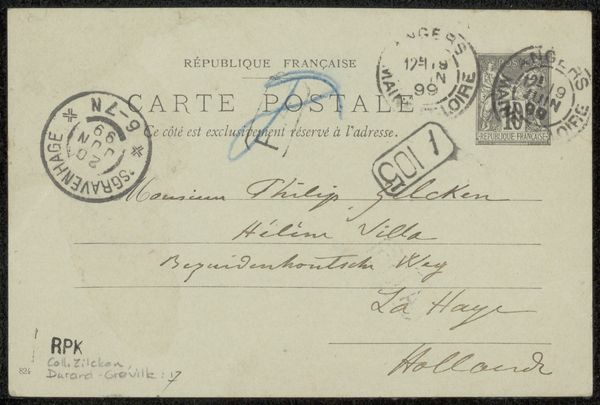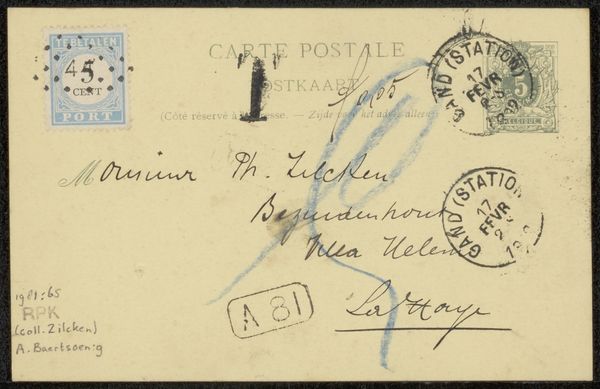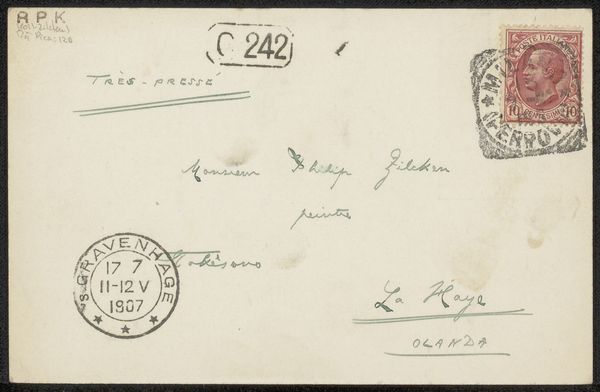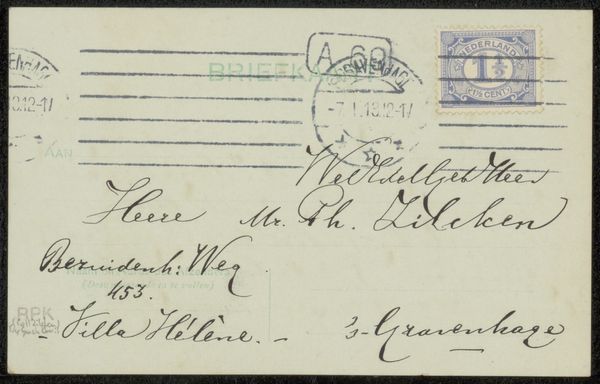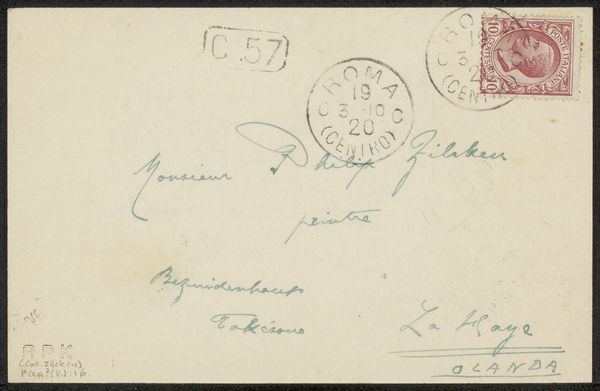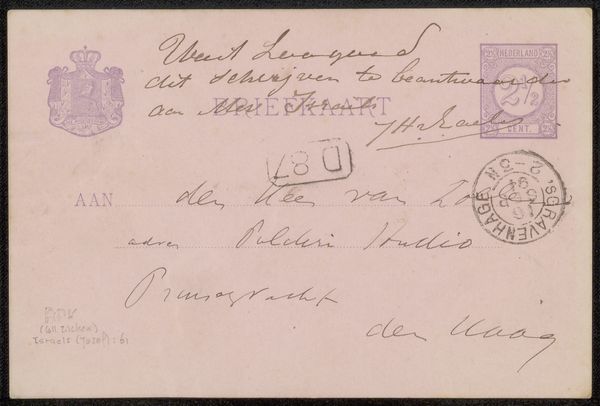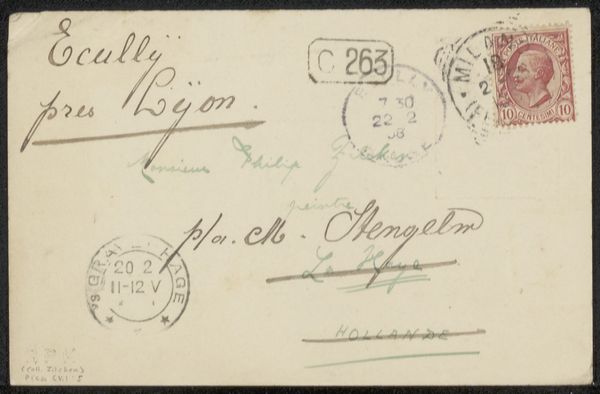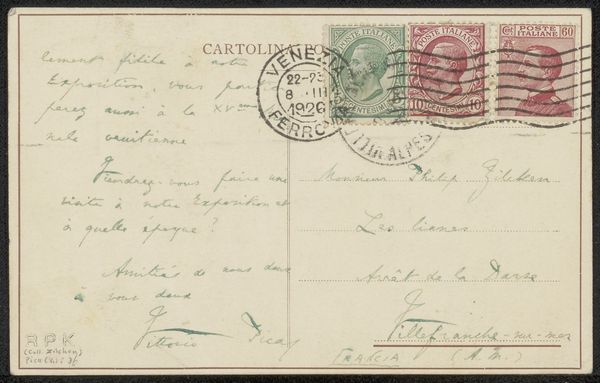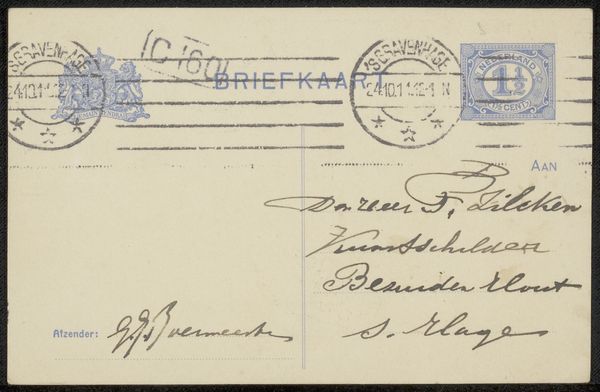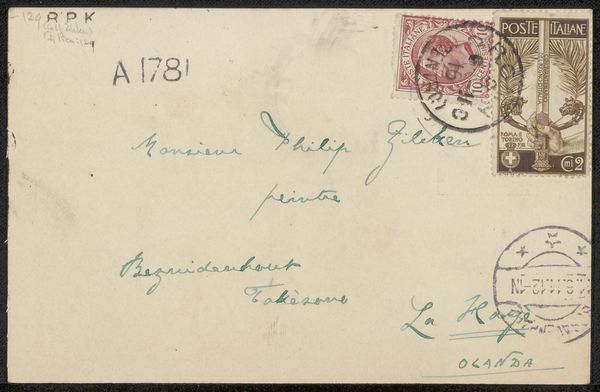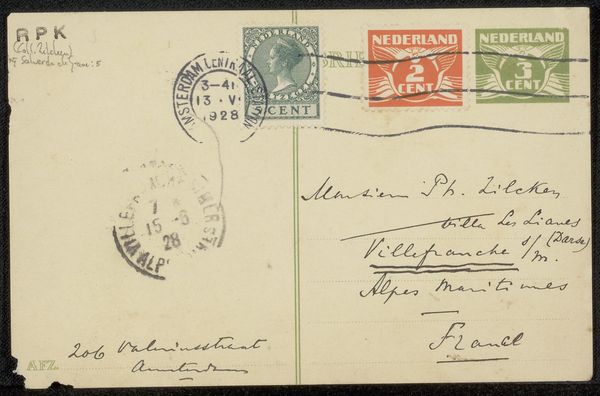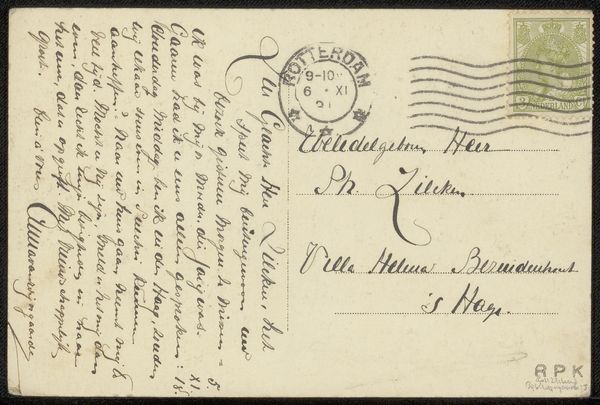
drawing, mixed-media, print, paper, ink
#
drawing
#
mixed-media
# print
#
paper
#
ink
#
post-impressionism
Copyright: Rijks Museum: Open Domain
Curator: Here we have "Briefkaart aan Philip Zilcken," a mixed-media artwork—drawing and print on paper—dating to before 1899. It currently resides in the Rijksmuseum. What are your immediate thoughts? Editor: It has this strangely intimate, yet distant quality, like finding an old letter in a secondhand book. The postal markings, the handwritten address...it feels like a fleeting moment captured across time, but divorced from its original purpose. Curator: Absolutely. This piece provides a fascinating glimpse into the intersection of personal correspondence and the postal system. These carte postale were extremely popular and offer historians a unique opportunity to see networks and socio-political factors at play, how artists, writers, and others maintained connections. Editor: Precisely! It becomes more than just an object. The French text declares that the reply is "exclusively reserved for the address," a tiny decree indicative of social conventions, even control, embedded in seemingly innocent interactions. And the very act of corresponding across geographic locations invites an examination into cross-cultural interactions and even class dynamics. Who had the luxury and ability to communicate in this way? Curator: The choice of imagery or design on the card itself can also indicate broader social trends or even propaganda initiatives if issued by governmental bodies. Roger Marx’s notes scribbled here give us added perspective—this wasn’t some anonymous piece. This was part of someone's life, not made as art per se, yet history grants it that distinction. Editor: Exactly. Considering Marx was an art critic, that complicates how we view this artifact even further. We cannot dismiss its identity as ephemera, but should acknowledge its evolving context. How should we consider something intended for mundane transit being preserved and regarded today? The power of objects can really subvert intentions. Curator: Indeed. Seeing how it's been archived transforms its story. The stamps, the postal marks, each tell their own mini-narrative and contribute to the larger discourse. Editor: Well, looking at the social and cultural factors woven into what first appears as a simple note certainly shifts how we appreciate its place within broader cultural histories. I'll definitely never see mail the same way! Curator: Me neither. This examination only encourages further inquiries into seemingly insignificant details that actually are rich historical markers.
Comments
No comments
Be the first to comment and join the conversation on the ultimate creative platform.
